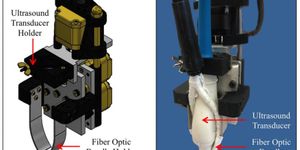Cryo-EM for Precise Molecular Structures

The Hedgehog signaling pathway is known to transmit information to embryonic cells. However, insufficient signaling during the developmental pathway leads to birth defects and while unmonitored the signaling can occur in many cancers including basal cell carcinoma, brain cancer, breast cancer, and prostate cancer. Advanced microscopic technology, Cryo-EM, can actually reveal the molecular mechanisms of the Hedgehog signaling pathway. Having a precise view of the molecular mechanisms can help pharmaceutical companies create drugs that target Hedgehog signaling.
Now, according to a study published recently in Science, researchers from UT Southwestern and Rockefeller University have utilized advanced microscopes to determine the atomic resolution of the molecular complex structure associated with birth defects and several cancers. More specifically, the researchers used cryo-electron microscopy (cryo-EM) technology which uses enormous robotic-equipped microscopes to show that two particular molecules known as Patched-1 (PTCH1) are engaged in the hedgehog signaling pathway. “Excessive signaling is implicated in basal cell carcinoma -- the most common malignant cancer in humans -- as well as in brain cancer, breast cancer, and prostate cancer,” explains Dr. Xiaochun Li, UT Southwestern Assistant Professor of Molecular Genetics and Biophysics and a Rita C. and William P. Clements, Jr. Scholar in Biomedical Research. “Many pharmaceutical companies are developing drugs that target Hedgehog signaling. Having a clearer view of the structure could help those efforts,” Dr. Li said.
Cryo-EM determines the structure of molecular samples that are frozen that are placed at temperatures so low that ice crystals never form. Furthermore, another study published in Nature showed a Cyro-EM structure of PTCH1-hedgehog (HH) molecular complex. "In the current Science paper, we report a 2-to-1 PTCH1-HH complex in which one Hedgehog molecule binds to two of its receptors (PTCH1) at two different spots. We used our cell biology assay to verify that this 2-to-1 complex is indeed the signaling generator for Hedgehog signaling. Combined with the earlier study published in Nature, we hope our new work will provide additional insights for physicians and scientists in this field," he explained.
Watch this video below to learn more about Cyro-EM technology:
Source: UT Southwestern Medical Center








